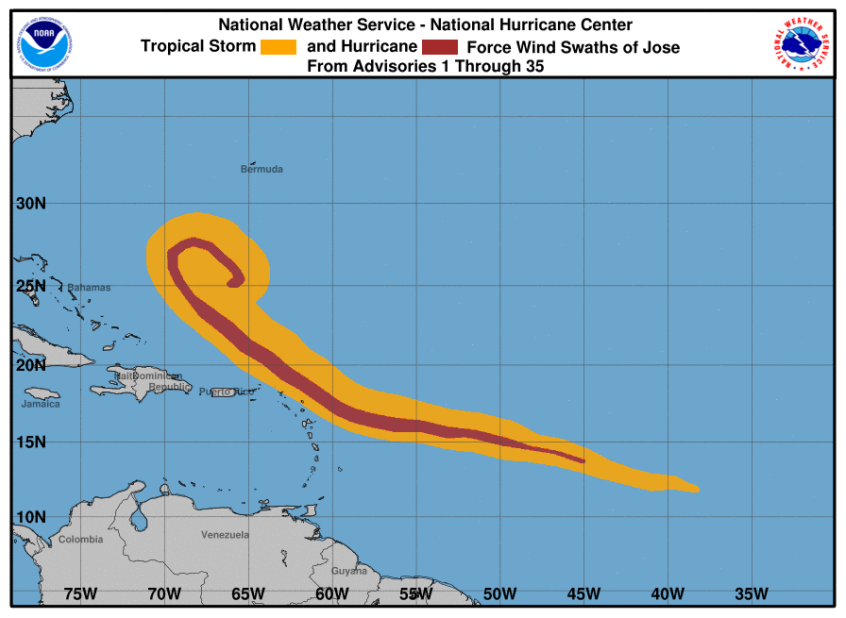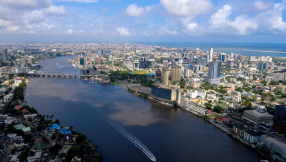
After threatening to affect the Hurricane Irma-battered islands of the Caribbean, Hurricane Jose made a loop in the Atlantic Ocean Wednesday morning, staying over the waters and posing little threat to land. The news was a slight relief for people in the Caribbean and the southeastern part of the country, which is still reeling from the devastation brought by Hurricane Irma.
The storm has become a little stronger, but remains a minimal Category 1 hurricane with winds measuring 80 mph. However, forecasters are expecting that the storm will weaken in the next few days and could lose its hurricane tag and become a tropical storm.
On Wednesday night, Jose was located approximately 495 miles south of the island of Bermuda. It was moving westward at three miles per hour. Just like meteorologists anticipated, the storm is making a clockwise loop over the Atlantic. Based on computer-generated models, the storm would be making this loop over the next 48 hours and will turn towards the north, with a path tracking between Bermuda and the east coast of the U.S.
Hurricane Jose threatened a number of islands in the Caribbean only days after the catastrophic damage brought by Hurricane Irma. The island of Barbuda, which was 90 percent destroyed by Irma, began preparation for the new storm on Sept. 8 and made plans to evacuate the entire island. Thankfully, the core of the storm stayed far offshore and spared the islands a second lashing.
Last week, Jose became a category 3 major hurricane, while Hurricane Irma was making its way toward the state of Florida. At the same time, a third hurricane named Katia was making her way towards the coast of Mexico. According to Colorado State University meteorologist Philip Klotzbach, this was the first time since 2010 that there have been three hurricanes at the same time in the Atlantic basin.









